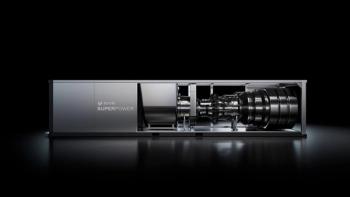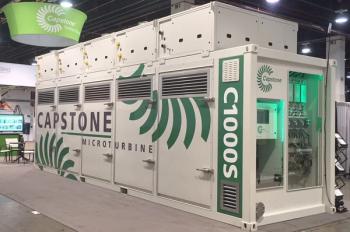
Performance and mechanical running tests of centrifugal compressors - I
Usually contractors and users include performance test in the base scope of the purchased compressor. However during bid conditioning, the Engineers tend to give less attention to the evaluated bidders’ shop test capabilities. Frequently this significant parameter is not assessed until after receipt of the compressor manufacturer’s test procedure. There are instances when performance test is not carried out in accordance with ASME PTC-10 test Code because one or more limits in the Code are violated. Therefore it is important that the user and the supplier mutually agree with the scope of shop performance test and discuss practical limitations of the test facility. Ideally this activity should be completed before issuing a purchase order for compressor(s). As a minimum, the following parameters should be included in the review.
·Will a closed loop performance test be carried out with compressor inlet pressure below atmospheric pressure, to reduce power requirement? This situation may arise in the case of high power compressors when the shop driver is limited in its output.
·Is a suitably rated torque measuring device available in the test shop to determine compressor shaft power?
·Instead, if heat balance method is used to calculate shaft power input, request compressor casing heat loss calculation from the supplier. It should include convection and radiation heat losses. Also, the location of compressor casing and ambient temperature measurement sensors should be stated in this calculation procedure. The importance of sensor location is explained in the next bulleted item.
·The ambient temperature should be measured in the vicinity of the compressor for determination of the true temperature difference. This ∆T is the lost work input and it affects the calculated polytropic efficiency. Test Power = Gas Power + Heat Loss. Compressor discharge temperature should be corrected by adding the heat loss due to radiation.
·Is balance piston leakage estimated, or measured during the test and subtracted from the inlet weight flowrate to compressor?
·Are the exchangers (usually of shell-and-tube type) in the shop test loop adequate for the maximum heat load generated during the shop performance test? These exchangers include the ones in lube oil and when applicable, in inter-stage services.
·What facility is available in the shop to purge the test loop with an inert gas prior to introducing the test gas?
·What gas sampling method is used for the test? Gas sampling must be carried out before each test measurement point.
·How is the control of gas mixing achieved when a volumetric mixture of test gases are used?
·On-line oxygen analyzer is required to monitor percent of air in the test loop (measurement of impurity in the test gas). Analyzer’s output shall be fed to data reduction computer program, to adjust the properties of the test gas. This is important, because change in molecular weight of the test gas will affect its density and the calculated compressor head. Note: ASME PTC-10 test Code requires that composition of test gas in a closed loop test must be continuously monitored to avoid formation of combustible mixtures.
·What is the maximum allowable working pressure of piping and equipment inside the test loop and is it adequate for the derived shop test conditions?
·What safety devices are installed in the test loop to protect from accidental overpressure?
·Which devices in the test loop detect and alarm abnormal conditions like loss of coolant to shop shell-and-tube heat exchangers?
·How is the lube oil cooling duty at full load established from no-load, full-speed mechanical running test?
·If a complete unit test is purchased, is the supplier’s shop equipped to use the contract lube oil system?
·What automated data acquisition and analysis systems are installed in the test facility to produce vibration response plots such as Bode’, Orbit, Polar, Amplitude vs. Frequency, and Waterfall Spectra? Can the supplier provide electronic copies of plots with the test report for user’s future reference?
·The shop data acquisition and processing system should be capable of adjusting the calculated test speed at the guarantee point with respect to the actual gas inlet temperature prevailing on the day of the test. Note: The inlet temperature used in the calculation of test speed can be different from the actual compressor inlet temperature.
·Similarly, the data processing system should be able to correct the calculated shaft power input based on the actual inlet pressure measured during the test. The specific volume ratio is affected by the pressure ratio. Specific volume ratio in each stage should be within the allowable departure in Table 3.2 in ASME PTC-10 test Code (within 95 to 105 percent of design values). From the perspective of similarity of flow when converting the test results to the specified or guarantee conditions, the volume flow coefficients, impeller tip Mach Numbers and Reynolds Number must be within the deviations permissible by the test Code.
TYPES OF PERFORMANCE TESTS
ASME PTC-10 test Code includes two types of tests. Type 1 test is carried out with specified (or design) gas at guarantee point operating conditions. Allowable deviations in the operating conditions and operating parameters are found in Tables 3.1 and 3.2 in the Code. Type 1 test is conducted when specified gas is readily available such as for air compressors.
Type 2 test allows the use of a substitute gas when testing with specified (design) gas is impractical. This test is used when design gases are hydrocarbon mixtures which are difficult to be duplicated under test conditions. Also note that some of the design gases are either toxic, or explosive, or highly flammable.
The permissible deviations from the specified operating parameters are shown in Table 3.2 in the Code. Substitute gas can be either a single gas or a gas mixture which closely resembles thermodynamic properties of the specified gas. Performance calculation methods may use either ideal or real gas laws. Table 3.3 in the Code includes the limits of departure from ideal gas laws for specified and test gases.
TEST GASES
Carbon dioxide, mixture of helium-nitrogen, propane, R134a, and natural gas are generally used as test gases in closed loop testing. Air is used in open loop testing but it should never be used in a closed loop testing because of potential for explosion if lubricating oil comes in contact and contaminates air.
Low molecular weight test gases are not considered for compressors in high molecular weight gas applications since the required test speed may exceed the maximum continuous speed of the compressor. Refinery recycle gas has molecular weight less than 10. Centrifugal compressors in this service are usually tested with a mixture of helium and nitrogen. Compressors in high molecular weight applications such as wet gas, and chlorine are typically tested with either R134a, or carbon dioxide.
The three factors that require particular attention when determining equivalency of the test and specified conditions are volume ratio, Machine Reynolds Number, and Machine Mach Number.
·Volume ratios of the test gas and the specified gas must be matched in accordance with the limits in Table 3.2 in the Code to ascertain that volume flow in all stages of the compressor will be equivalent during performance test. Volume ratio is directly proportional to molecular weight, speed, and compressor’s head but bears an inverse relationship with compressibility Z, inlet temperature, and K–value of the gas (ratio of specific heats Cp/Cv).
·
Machine Reynolds Number is related to friction losses in the compressor gas passage. A correction in the test efficiency is required by the Code if Machine Reynolds Numbers at the test and specified conditions differ. Allowable Reynolds Number departures are shown in Figure 3.5 in the Code.
·The Machine Mach Number is the ratio of the velocity at the outlet of the first stage impeller to the acoustic velocity at compressor inlet conditions. It is a measure of the maximum compressor capacity and therefore associated with stonewall effect. Allowable Machine Mach Number departures are represented in Figure-3.3 in the Code. Ideally, the test gas should have the same or if not possible, a higher K–value than that of the specified gas to achieve close proximity to design Machine Mach Number.
To be continued
Neetin Ghaisas is Fellow, Rotating Equipment and Director - Design Engineering in Fluor. Ghaisas possesses more than thirty-two years of professional background with significant experience in the specification, selection, application, and troubleshooting of rotating equipment. Ghaisas is a taskforce member of several American Petroleum Institute (API) Standards and a member of the Machinery Function Team for Process Industry Practices
Newsletter
Power your knowledge with the latest in turbine technology, engineering advances, and energy solutions—subscribe to Turbomachinery International today.





